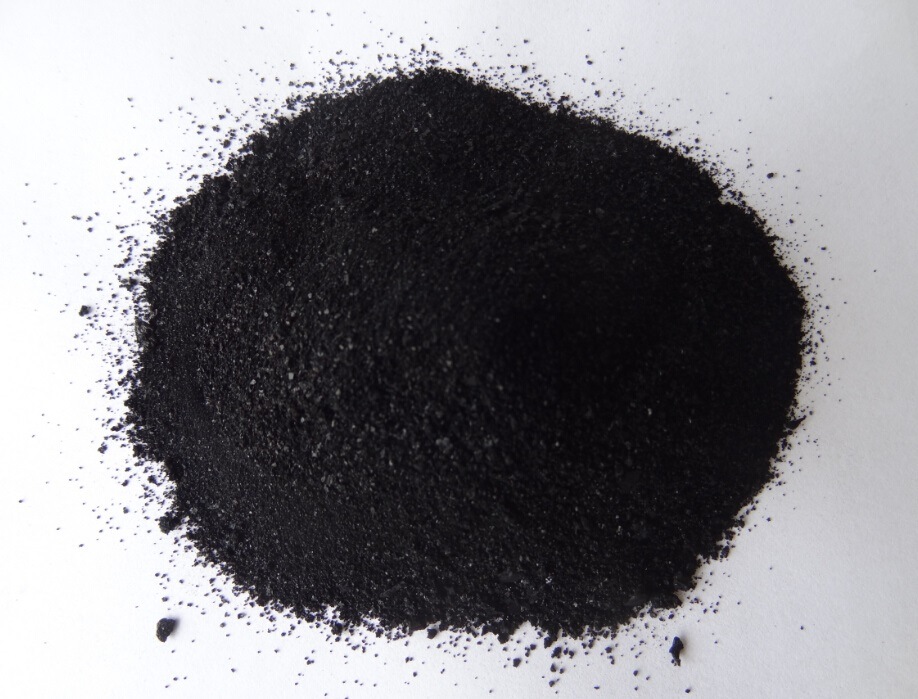Appearance: Flashing black flakes or granules
Product character: Sulphur black is insoluble in water or ethanol, it appears as green-black in the solution of sodium sulfide, appears bluish when put caustic soda in the solution of sulphur black, and appears greenish precipitate with hydrochloric acid
It's miniature soluble in cold sulfuric acid, turns to greenish blue precipitate after it's warmer, then turns to black-blue when keeps heating. Sulphur dyes have good dye-uptake and level dyeing.
Â
| Items | Standard |
| Color Index NO. | C.I. SulphurBlack1 (53185) |
| Strength (Percent of the standard) | 100% |
| Shade (As the standard) | Approximate |
| Moisture(%)≤ | 7.0 |
| Insoluble matter in sodium sulfide(%)≤ | 0.5 |
| Harmful aromatic amines (mg/kg) | Up to standard of GB 19601 |
| Heavy metal element (mg/kg) | Up to standard of GB 20814 |

Hydroxyalkyl Cyclodextrin/Hydroxypropyl Cyclodextrin Derivatives mainly including Hydroxypropyl Alpha cyclodextrin, Hydroxypropyl Beta Cyclodextrin, Hydroxypropyl Gamma Cyclodextrin, Hydroxybutyl Beta Cyclodextrin.
 Cyclodextrins are donut shaped circles of glucose (sugar) molecules that bring together oil and water and have potential applications anywhere oil and water must be used together. Successful applications have been made in the areas of agriculture, analytical chemistry, biotechnology, cosmetics, diagnostics, electronics, foodstuffs, pharmaceuticals and toxic waste treatment. Stabilization of food flavors and fragrances is the largest current worldwide market for Cyclodextrin applications. We and others have developed Cyclodextrin-based applications in stabilization of flavors for food products; elimination of undesirable tastes and odors; preparation of antifungal complexes for foods and toiletries; stabilization of fragrances and dyes; reduction of foaming in foods; cosmetics and toiletries; and the improvement of quality, stability and storability of foods.
Cyclodextrins are donut shaped circles of glucose (sugar) molecules that bring together oil and water and have potential applications anywhere oil and water must be used together. Successful applications have been made in the areas of agriculture, analytical chemistry, biotechnology, cosmetics, diagnostics, electronics, foodstuffs, pharmaceuticals and toxic waste treatment. Stabilization of food flavors and fragrances is the largest current worldwide market for Cyclodextrin applications. We and others have developed Cyclodextrin-based applications in stabilization of flavors for food products; elimination of undesirable tastes and odors; preparation of antifungal complexes for foods and toiletries; stabilization of fragrances and dyes; reduction of foaming in foods; cosmetics and toiletries; and the improvement of quality, stability and storability of foods.
Cyclodextrins can improve the solubility and stability of a wide range of drugs. Many promising drug compounds are unusable or have serious side effects because they are either too unstable or too insoluble in water. Strategies for administering currently approved compounds involve injection of formulations requiring pH adjustment and/or the use of organic solvents. The result is frequently painful, irritating, or damaging to the patient. These side effects can be ameliorated by Cyclodextrins. Cyclodextrins also have many potential uses in drug delivery for topical applications to the eyes and skin.
Cyclodextrin Background
Cyclodextrins are formed naturally by the action of bacterial enzymes on starch. They were first noticed and isolated in 1891 by a French scientist, Villiers, as he studied rotting potatoes. The bacterial enzyme naturally creates a mixture of at least three different Cyclodextrins depending on how many glucose units are included in the molecular circle; six glucose units yield Alpha Cyclodextrin ([ACD"); seven units, Beta Cyclodextrin ([BCD"); eight units, Gamma Cyclodextrin ([GCD"). The more glucose units in the molecular circle, the greater the volume of the toroid. The inside of this [donut" provides an excellent resting place for [oily" molecules while the outside of the donut is significantly compatible with water enabling clear stable solutions of Cyclodextrins to exist in aqueous environments even when an [oily" molecule is carried within the donut hole. The net result is a molecular carrier that comes in small, medium, and large sizes with the ability to transport and deliver [oily" materials using water as the primary vehicle.
Cyclodextrins are manufactured in large quantities by mixing appropriate enzymes with starch solutions, thereby reproducing the natural process. ACD, BCD and GCD can be manufactured by an entirely natural process and therefore are considered to be natural products. Additional processing is required to isolate and separate the Cyclodextrins. The purified ACD, BCD, and GCD are referred to collectively as [natural" Cyclodextrins (NCDs).
The chemical groups on each glucose unit in a Cyclodextrin molecule provide chemists with ways to modify the properties of the Cyclodextrins, i.e. to make them more water soluble or less water soluble, thereby making them better carriers for a specific chemical. The Cyclodextrins that result from chemical modifications are no longer considered [natural" and are referred to as chemically modified Cyclodextrins. Since the property modifications achieved are often so advantageous to a specific application, the Company does not believe the loss of the [natural" product categorization will prevent its ultimate commercial use. It does, however, create a greater regulatory burden.
Hydroxypropyl Cyclodextrin Derivatives
Hydroxypropyl Beta Pharmaceutical Excipients,Hydroxypropyl Beta Cyclodextrin,Hydroxypropyl Alpha,Hydroxypropyl Alpha Beta Cyclodextrin
Zhiyuan Biotchnology , http://www.zycydextrin.com